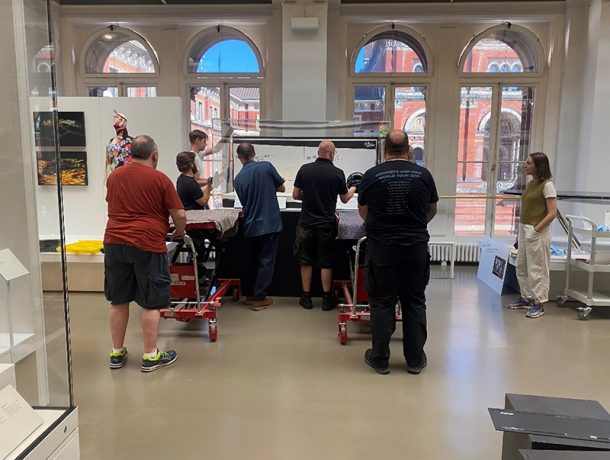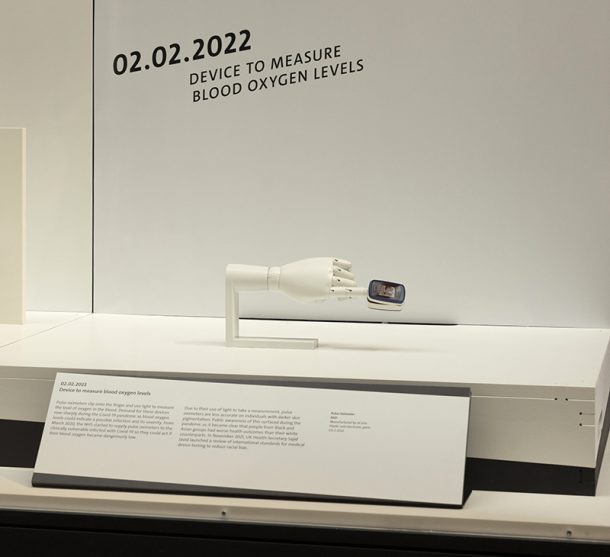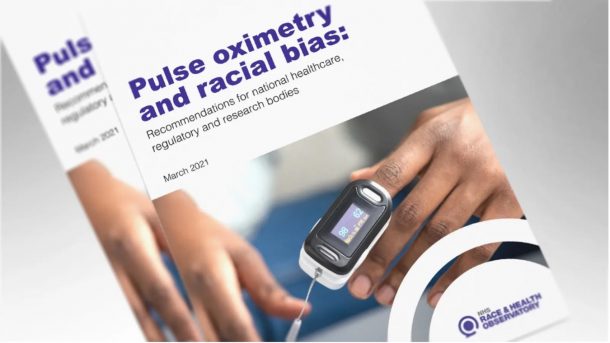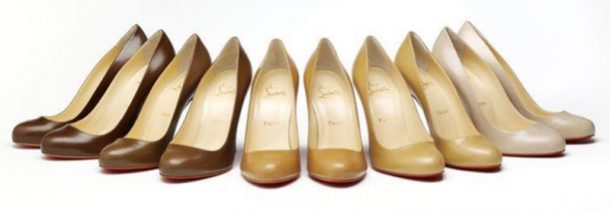Last week, we put the latest Rapid Response Collecting acquisition, the fingertip pulse oximeter, on display. Rapid Response brings noteworthy objects into the collection, activating the museum as a place for discussion on the role of design in society.

What is a Pulse Oximeter?
A pulse oximeter is a device which clips onto the finger and uses light to measure a wearer’s pulse and blood oxygen level. First invented in 1974 by Dr Takuo Aoygi, it is an important tool for reducing deaths of patients under anesthesia.
The pulse oximeter is one of many objects that has changed in use and association during the Covid-19 pandemic. The device can be used to identify ‘silent hypoxia’, a state where blood oxygen levels become dangerously low without outward symptoms. For people who have contracted the Covid-19 virus, this is a predictor of becoming seriously unwell. Early diagnosis helps save lives and as a result, the ‘COVID Oximetry @home pathway’ was set up by the NHS and rolled out nationally in November 2020. The service provided pulse oximeters at home for at-risk people who had tested positive for the virus. Many individuals also purchased the device, including our colleague Ana, who wrote about the growing importance of the device in a V&A Pandemic Objects blog in June 2020.

Why was the Pulse Oximeter publicly scrutinized?
Over the course of 2021, media attention and public awareness of evidence that showed pulse oximeters to be less effective on people with darker skin grew. This evidence was available in medical papers in the early 2000s, but it was not widely known with the medical community, politicians, or the public. A study published in December 2020 in The New England Journal of Medicine found similar results specifically linked to the Covid-19 pandemic. Prompted by this study, the US Food and Drug Administration (FDA) issued a warning highlighting the limitations of pulse oximeters, pointing out that darker skin pigmentation reduced efficacy.

Why have we acquired the Pulse Oximeter into the collection?
Systemic racism within medical technologies was acknowledged in November 2021 by then UK Health Secretary Sajid Javid. Along with his American counterpart Xavier Becerra Secretary of Health and Human Services, he launched a review of international standards of medical devices. The review included new standards that devices must be tested on people of diverse backgrounds.
One of the reasons that this bias arises, is the from the lack of diversity of people involved in the design of technology, and in those it is developed and tested with. Assumptions are made that technology that works for one group of people, must work for everyone. The Covid-19 pandemic is an example of the real-world impacts that this has had – the design of the pulse oximeter was one of several factors contributing to worse health outcomes for people of colour. The UK/US review of medical standards is a long overdue move to address the dangers, and devastating outcomes, of racial bias in medical design.
The Rapid Response collection has included other designs that have examined racial bias in design, for example the 2013 Louis Vuitton nude shoes, which expanded the ‘nude’ offering beyond the colour of pale skin. Another existing object that exposes bias in design more broadly is a specialized saddle created following the reports of professional female cyclists’ labia damage caused by using high performance saddles, until this point designed for men.

If you have any suggestions for what you would like to see collected by the Rapid Response Collection, please Tweet us using #RapidResponseCollecting.
Visit the Design: 1900 – Now galleries to see the Rapid Response Collection on display.


